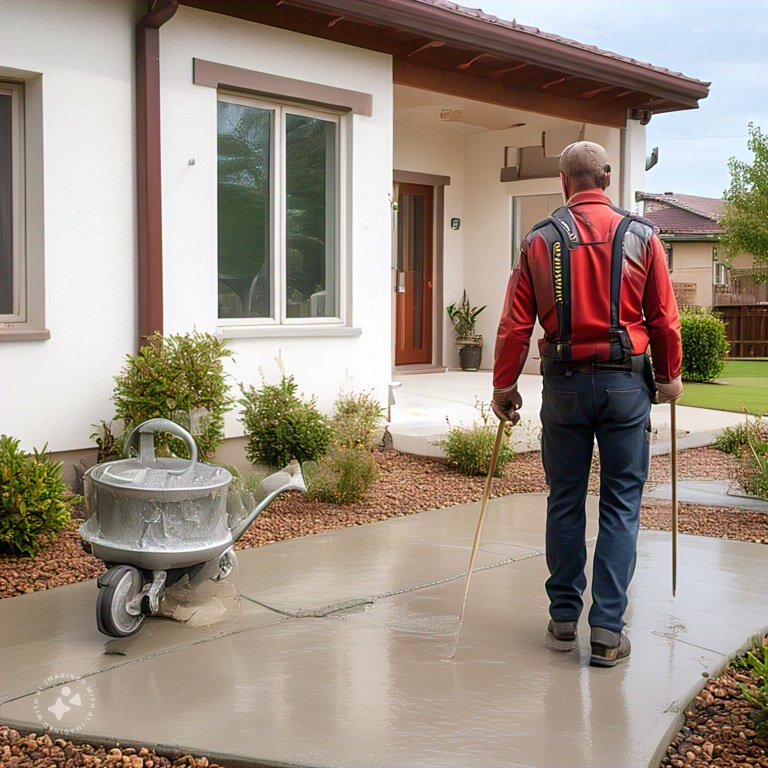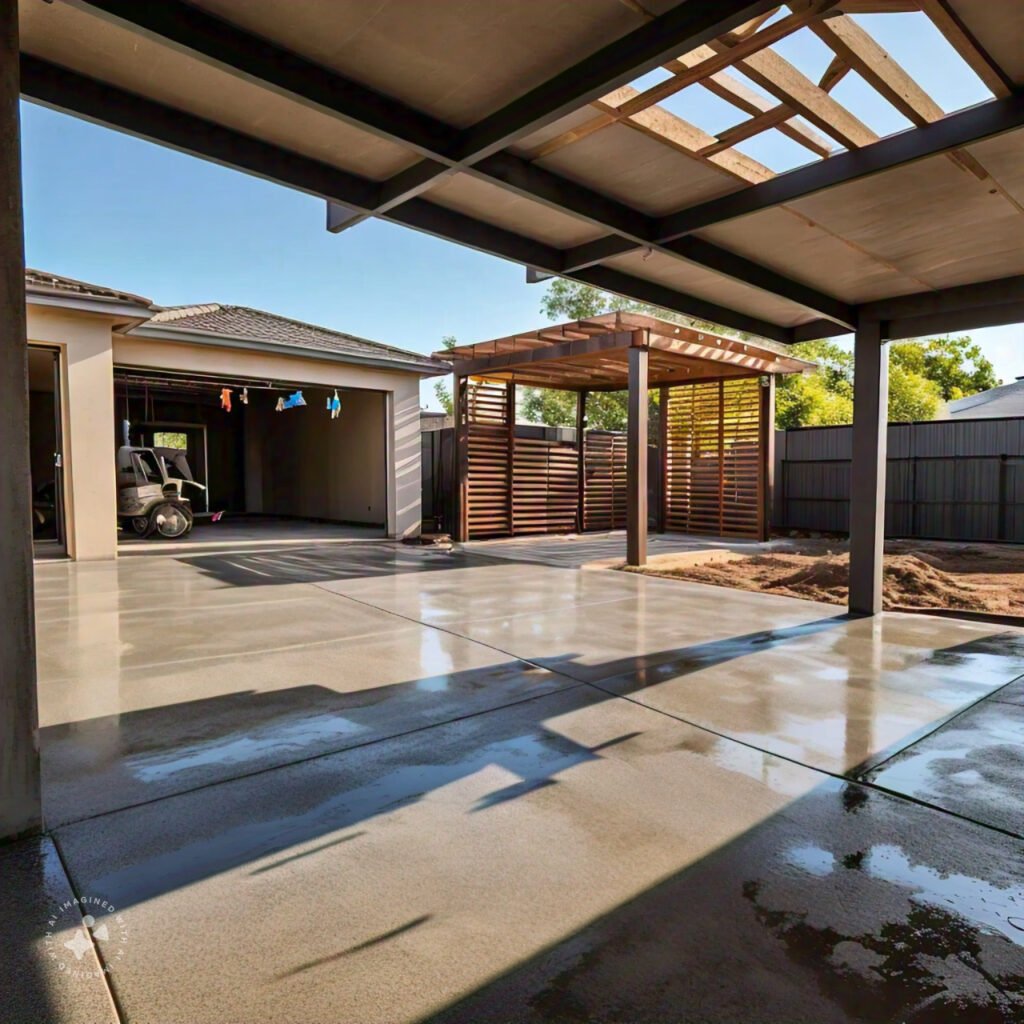A strong structural base is vital for any home or building, particularly in Houston’s unique environment. Ignoring necessary repairs can lead to serious complications, as foundation stabilization is key to maintaining safety and security.
Engaging in proactive measures not only safeguards your property’s integrity but also minimizes potential expenses in the future.
Cross Construction Services in Houston, Texas, excels in providing reliable solutions, including innovative techniques such as concrete lifting to address uneven surfaces.
Homeowners should watch for signs like wall cracks or shifted floors, indicating urgent issues that require attention. Routine inspections play a crucial role in detecting these problems early on, and methods like mud jacking or underpinning can restore stability effectively, ensuring your residence remains a secure haven.
These methods, including slab leveling, foundation stabilization, concrete lifting, mud jacking, underpinning, and Piering, are essential for maintaining the structural integrity of buildings.
Click here to learn more about: ccsconcretedriveways.com
Click here to learn more about: residential concrete services
Signs of Foundation Failure
Recognizing early indicators of structural instability in your home is essential for maintaining its integrity. A thorough foundation assessment can reveal underlying issues before they develop into major repairs.
One common manifestation of trouble is the appearance of visible cracks, which may vary in direction and size.
Monitoring both vertical and horizontal fissures is important, as they often point to significant concerns.
Additionally, uneven floors can be a telltale sign; sloping surfaces may suggest shifts in the foundation. Misalignment in doors and windows also warrants attention, as it can affect both the security and energy efficiency of your space.
Engaging in regular structural repair evaluations allows homeowners to detect these issues early, enabling proactive measures such as crack sealing or void filling to be taken

Common Concrete Repair Methods
Repairing concrete damage is essential to maintaining structural integrity and longevity. Various techniques cater to specific problems, ensuring that each solution is effectively aligned with the type of damage encountered.
For instance, helical piers are often utilized to address foundation concerns, providing stability in cases of settling issues.
Another common technique is resurfacing, which refreshes tired surfaces and enhances aesthetics significantly.
Drainage solutions can also play a crucial role, as slope correction is necessary to prevent water accumulation that might lead to further degradation. Employing methods like crack injection with epoxy resins offers targeted repair for cracks, restoring the strength of the material.
Overall, these prevalent strategies are vital for the upkeep of concrete structures.
Concrete Repair Techniques
- Helical piers can support loads of up to 30,000 pounds, making them effective for stabilizing foundations.
- Resurfacing can extend the life of concrete surfaces by 10-15 years when properly applied.
- Proper drainage solutions can reduce the risk of foundation damage by directing water away from structures.
- Crack injection with epoxy resins can restore up to 90% of the original strength of the concrete.
Importance of Foundation Inspection
Maintaining the structural integrity of a property is crucial for its longevity and value. Regular assessments can uncover underlying issues that, if left unresolved, may lead to significant challenges, including foundation failure.
These evaluations assist in detecting problems stemming from factors like earth settling, which can compromise a building’s stability.
Signs such as cracks in walls or uneven floors often signal the need for a thorough inspection.
By addressing these indicators promptly, homeowners can implement solutions such as moisture barriers or slab jacking to mitigate further damage. Adopting a proactive strategy ensures not only the protection of your investment but also the enhancement of overall safety.
Benefits of Slab Leveling
Addressing uneven surfaces is crucial for maintaining the integrity of your property. This essential process not only ensures residential repairs are effective but also prevents further damage to the foundation.
By correcting these issues, you enhance structural stability and reduce the risk of significant complications in the future.
It serves as a cost-effective measure, minimizing the expenses associated with ongoing repairs.
Quick restoration of aesthetics significantly boosts the appearance and curb appeal of your home. With rapid installation, homeowners can return to normal activities sooner, while also increasing property value through effective solutions.
Ultimately, this proactive approach deters secondary damage, protecting against potential water intrusion and pest infestations.
Addressing Uneven Surfaces
- Correcting uneven surfaces can prevent foundation damage, which is often costly to repair.
- Enhancing structural stability reduces the likelihood of significant complications, such as cracks and leaks.
- Addressing these issues promptly can lead to increased property value and improved curb appeal.
- Proactive measures help deter secondary damage, including water intrusion and pest infestations.
Effective Crack Sealing Techniques
Maintaining the integrity of concrete surfaces is vital for long-lasting structures. Proper techniques not only protect crucial foundation anchors but also prevent water intrusion that could lead to deterioration over time.
It’s important to learn about the various types of cracks, including static ones that indicate settling and dynamic ones suggesting movement.
Choosing the right repair methods is essential; the sealants used must align with the specific characteristics of the crack.
Before applying any material, a thorough site evaluation should be conducted to clean the crack and assess its dimensions. This step ensures the sealant adheres correctly.
After application, it’s wise to monitor for potential concrete flaws that may arise later. Consulting with foundation expertise can provide additional support if complications become severe.
Understanding Piering Methods
For structures facing foundational challenges, various techniques are available to enhance stability and safety. These methods enable the transfer of weight to deeper soil layers, which is crucial in addressing shifting or settling issues.
Different approaches, such as push, helical, and concrete solutions, cater to specific soil conditions and load requirements.
Engineering solutions like push Piering work by driving steel tubes into the ground, effectively supporting the structure above.
Helical piers are often favored for lighter buildings due to their swift installation. Understanding foundation maintenance is vital, as well as being aware of local building codes, to ensure the selected method is appropriate and effective.
Proper installation guarantees longevity and reliability.
Foundation Stability Techniques
- Push Piering can significantly improve structural support by transferring weight to deeper, more stable soil layers.
- Helical piers are particularly effective for lighter buildings, allowing for quick installation with minimal disruption.
- Understanding local building codes is essential to ensure that foundation repair methods comply with safety regulations.
- Proper installation of foundation solutions is crucial for ensuring the longevity and reliability of the structure.
Role of Drainage Solutions
Maintaining the integrity of a property relies heavily on effective measures to manage water flow. Well-designed systems are essential to redirect water away from structures, thereby minimizing the risk of accumulation that can destabilize the soil.
This accumulation can lead to potential foundation issues, compromising the health of the entire property.
When water pools near a building, soil erosion and structural damage become significant concerns that can jeopardize foundation systems.
Incorporating sound solutions during construction techniques can effectively prevent these issues from arising. Regular property assessments are crucial, as they help identify early signs of drainage concerns, ensuring that repair services are conducted promptly to avert severe damage.
Foundations and Soil Compaction
A solid base is essential for ensuring the durability and stability of structures. The relationship between soil compaction and the overall stability of a structure is critical, as properly compacted soil significantly enhances the load-bearing capacity.
This process minimizes settling issues, contributing to the overall structural integrity by ensuring that weight is uniformly distributed across the foundation.
Common techniques for soil compaction include mechanical methods like rollers and hydraulic compaction systems.
These methods create a stable base for foundations, helping to prevent soil erosion and reducing future damage restoration needs.
Regular soil testing, including moisture content assessment, ensures that optimal conditions for effective compaction are achieved.
Soil Compaction
- Proper soil compaction increases load-bearing capacity, enhancing structural stability.
- Mechanical compaction methods, such as rollers, effectively create a stable foundation base.
- Regular soil testing for moisture content is crucial for achieving optimal compaction conditions.
- Minimizing settling issues through compaction contributes to overall structural integrity.
Concrete Patio Repair Houston Enhances Your Outdoors
Concrete Crack Repair Houston Solves Your Issues
Concrete Patio Repair Houston Enhances Your Outdoors
Concrete Crack Repair Houston Solves Your Issues


